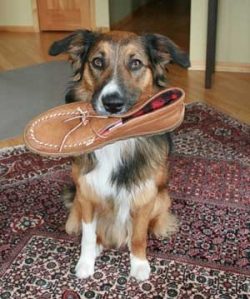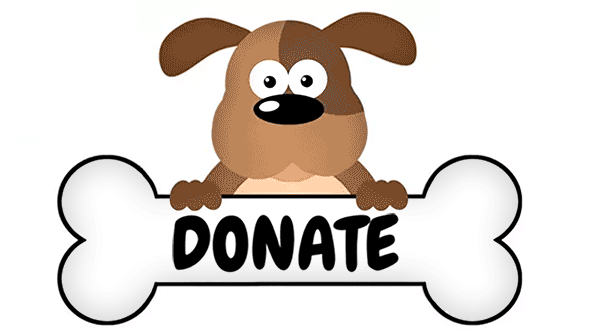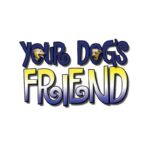 Chewing
Chewing
Oh, dear. He’s done it again.
Your precious pooch has gone and destroyed something. Whether it’s your furniture, your children’s toys, or the dog bed, it is downright annoying when you have to constantly clean up after your dog’s chewing escapades. And don’t forget the expense or that nagging fear that your dog may have ingested something harmful!
The bad news: All dogs need to chew.
The good news: You can help your dog chew appropriate items.
Why Do Dogs Chew?
Chewing is normal for all dogs, but especially puppies. Puppies explore the world with their mouths and soothe the pain of teething through chewing. But why do adult dogs chew?
- If you have a young, high energy dog with nothing to do, chewing provides an easy solution. Furniture, walls, and railings are all fair game.
- An anxious dog will chew to relieve stress. Something with your scent may be particularly appealing, but the act of chewing itself can lessen anxiety.
- A dog with extreme separation anxiety or thunder phobia may chew base boards, door jambs, and window frames trying to escape.
- A dog will grab something and run with it for a good chew, if that’s how to get your attention. You might even join in for a game of “chase”.
- Chewing is fun!
What dogs don’t do is chew out of spite. They chew what’s available. That may be your favorite shoe, but not because your dog is trying to get back at you.
What You Can Do
- Put away anything that you don’t want your dog to chew. Close your door, use your closet, or place things too high for your dog to reach.
- Add exercise and mental stimulation to your dog’s daily routine. Take long walks (or runs!), throw a ball, blow bubbles, or use a dog exercise toy, like a Chase ‘N Pull or a Flirt Pole, for your dog to chase. Practice training or tricks, and give your dog a few interactive toys that drop kibble when a dog moves them a certain way. The Everlasting Treat Ball, Bob-a-Lot, and Dog Dizzy are three good choices, although there are plenty of others. Rotate toys every few days. That way, whatever you bring out will always seem new and exciting.
- Keep an eye on your dog, so you can immediately provide an alternative chew toy if necessary. This will be easier if your dog is in the same room with you. Either use baby gates to close off an escape or an ex-pen, a metal or plastic “playpen” that can surround your dog.
- Make chew toys AWESOME. Get Kongs (made of hard rubber and designed for different chewing strengths) or sterilized femur bones, and stuff them with peanut butter, cream cheese, yogurt, canned food, whatever your dog likes. Keep a number of stuffed Kongs in the freezer. Frozen Kongs will occupy your dog longer, and you can grab them whenever needed.
- When you aren’t home, confine your dog to a crate or safe room … with some chew toys of his own. Make sure they don’t have small parts that your dog could break off and ingest. Your safest bets for alone time are Kongs or similar toys, like West Paw’s Tux toy or Busy Buddy’s Squirrel Dude.
- For puppies, freeze a wet washcloth as a chew toy (or freeze non-fat yogurt in a Kong). The cold temperature will soothe aching gums.
Teaching Your Dog to Trade
Typically, if a dog runs off with a shoe, for example, we run after the dog while yelling, “NO. Give that back!” Your dog then either runs around with it to get you to chase or takes it under a table, so he can keep it more easily. Instead of playing that “game,” try walking over to your dog calmly and trading that shoe for an acceptable chew toy. If that toy has a favorite food inside or smeared on the outside, your dog is almost certain to choose the toy.
The “Drop It” Game
Give your dog a toy, or practice this when your dog already has a toy in his mouth. Say “Drop It” and put a yummy treat (like chicken, cheese, or a piece of hot dog) under your dog’s nose. Your dog will drop his toy to eat the treat. When your dog has finished the treat, give him back his toy. Repeat this game often. Your dog has just learned that “Drop It” means he gets something better. And as long as he has one of “his” own things, he gets that back too. Or course, if he has your pillow, he won’t get the pillow back, but that won’t ruin a “cue” he has learned through multiple repetitions.
Appropriate Chew Toys
Here are just a few:
- KONG, West Paw’s Tux toy, or Busy Buddy’s Squirrel Dude (stuffed with goodies and frozen to make them last longer)
- Bully Sticks
- Antlers
Always supervise your dog when he is chewing an edible item. Sometimes, a dog can choke if he tries to swallow a large piece, or small, sharp pieces can chip off, causing tooth problems and, occasionally, more serious internal damage. Never give your dog cooked bones, since they can splinter. Also, remember that edible treats have calories. So, adjust your dog’s meal intake accordingly to keep your dog at a healthy weight.
Punishment Doesn’t Help
When you come home and your dog “looks guilty,” it’s not because he knows he did something “wrong.” What he knows is that you look and sound upset.
Here are just a few reasons why punishing your dog won’t help:
- Dogs only know what just happened. So, punishing your dog for the shoe he chewed five minutes ago doesn’t make sense to him.
- The reason that you are acting upset or frustrated, although clear to you, may not be so clear to your dog.
- Punishment doesn’t solve your dog’s issues, whether it’s boredom, attention seeking, or fears. So, even if you punish your dog for chewing, another behavior will emerge.
Instead, take steps to keep unsuitable items inaccessible while providing your dog with safe, appropriate chews.
Key Points To Remember
- Chewing is a natural dog behavior. All dogs, not just puppies, like to chew.
- Chewing can be a way to relieve stress or boredom or to get attention.
- Teach your dog to “drop it” by trading up for something better.
- Never chase or punish your dog. Neither of these will help your dog learn.
- Have appropriate chew toys available for your dog to enjoy.
Resources
www.nina-ottosson.com – a lot of terrific toys, including complicated puzzle toys. You can also buy these and other smart toys on our website at www.yourdogsfriend.org/we-recommend/books-treats-products/
www.bestbullysticks.com – an assortment of packaged chews. They’re cheaper that way!
Still Need Help?
Our trainers would be glad to help you. Our monthly Welcome Home, Pup! is a Q&A session open to anyone, even if you’ve had your dog for a long time. Come pick the brain of one of our trainers and go home with a few new tricks up your sleeve. Click here for the workshop schedule.
Your Dog’s Friend is a 501-c3 non-profit organization that educates and supports dog parents. We offer behavior and training advice; sponsor FREE workshops on a variety of topics; run positive dog training, behavior-related, and sports classes; refer dog parents to trainers, dog walkers, and other professionals; and send an e-newsletter with articles, resources, and announcements.
This material is not intended to be a substitute for professional help when dealing with dogs with intense or potentially dangerous behavior issues. Consider consulting a positive reinforcement trainer or animal behaviorist for situations that you feel are dangerous or that you don’t feel equipped to handle. A list of recommended trainers and behaviorists can be found on our website, www.yourdogsfriend.org.




